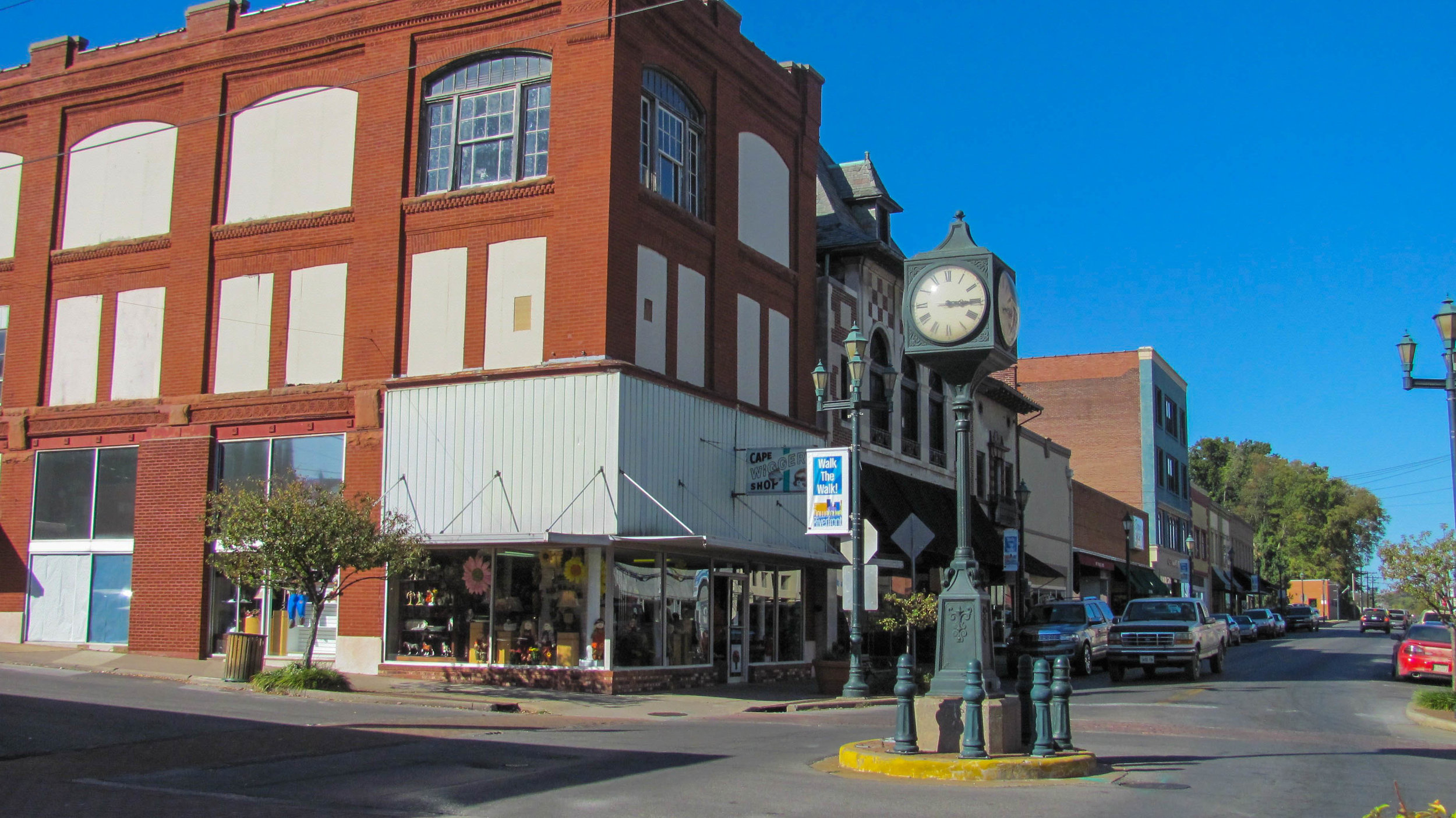Visitors Guide to Charleston
Mississippi County, Missouri
The Moore House
Charleston s the largest town in Mississippi County was well as its county seat. Settlement of the town initially occurred on the north side of town in what in 1805 was called Matthews Prairie. Charleston was platted in 1837 Joseph Moore, W. P. Bernard, and Mrs. Thankful Randal after Moore bought buying 22.5 acres for $337 south of Matthews Prairie. According to town lore Moore promised to name the town for his brother Charles if he helped. At various times it was called St. Charles Prairie and Carlos Prairie before ultimately being named Charleston. Charleston’s connection with the Mississippi River during its early days was Bird’s Point which is just east of Charleston. Bird’s Point was settled in 1798 by Abraham Bird, who received a grant from the Spanish government for land opposite the mouth of the Ohio River. The Lewis and Clark expedition arrived at Bird's Point on November 16, 1803. Meriwether Lewis wrote in his journal that they had "reached the huts of some persons who had established themselves for the purpose of trading with the Indians." This was an important day for Lewis and Clark as it was the first time they set foot within the Louisiana Purchase, the area they had been sent to explore. An interpretive exhibit about Lewis and Clark is located at the Henry S. Whipple Park on the south side of Charleston. Charleston was overshadowed by Matthews Prairie until the town was selected as the county seat in 1845. Charleston was still slow to grow until a courthouse was built in 1852.
There were two notable events in Charleston during the Civil War. The Battle of Charleston (also known as the Battle of Bird's Point) was fought on August 19, 1861.This was minor clash in Charleston where Union forces led by Colonel Henry Dougherty wase able to destroy a Confederate camp. There had been a number of clashes in the Charleston and Bird's Point area for the previous week between pro-Union forces and secession groups. Charleston’s other Civil War claim to fame came on September 1, 1861 when Confederate General M. Jeff Thompson robbed the Union Bank of Charleston. Thompson, who handed the cashier a note, gave the cashier an hour to get approval from superiors to give him keys to the vault. After receiving the money he left a receipt for $57,000 and discovered later that only $56,000 was in the bags.
The arrival of the Iron Mountain and Southern Railroad in the late 1870s and the 1882 completion of the Texas & St. Louis Railroad from Bird’s Point through Charleston to the Texas border spurred Charleston growth as a trading center. The city was the epicenter of the October 31, 1895 6.6 earthquake on the New Madrid Seismic Zone. The quake damaged virtually all buildings in Charleston, creating sand volcanoes, cracking a pier on the Cairo Rail Bridge and toppling chimneys as far as St. Louis, Memphis, and cities in Alabama and Indiana. The quake was the biggest quake since the 1812 New Madrid earthquake which at 8.3 was the biggest recorded quake in the United States. One of the most visible signs of the quake is Henson Lake south of Charleston which was greatly expanded by the quake.
Charleston is known for its beautiful homes and colorful gardens. The Mississippi County Historical Society Museum is located in an antebellum era home, the Moore House. This home displays many important pieces of the county’s history such as periodic furniture, documents, and other historical artifacts. Charleston is also known as the home of former Missouri Governor Warren E. Hearnes. A museum dedicated to all of his accomplishments as Governor is located in the Charleston downtown area. Charleston has become known for the Dogwood-Azalea Festival held every April which is known for tours of the town.
www.charlestonmo.org - The official website of Charleston Chamber of Commerce.













